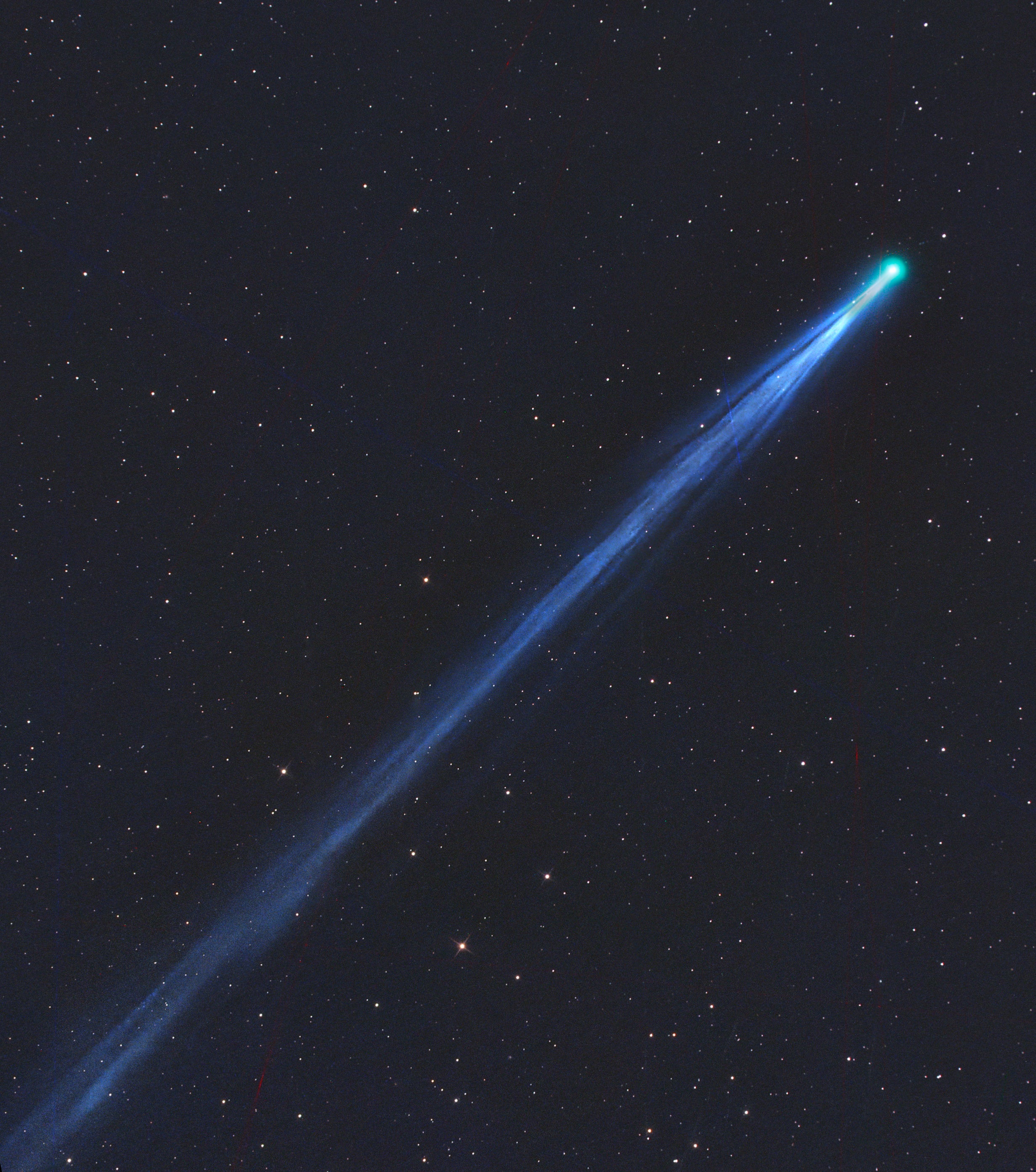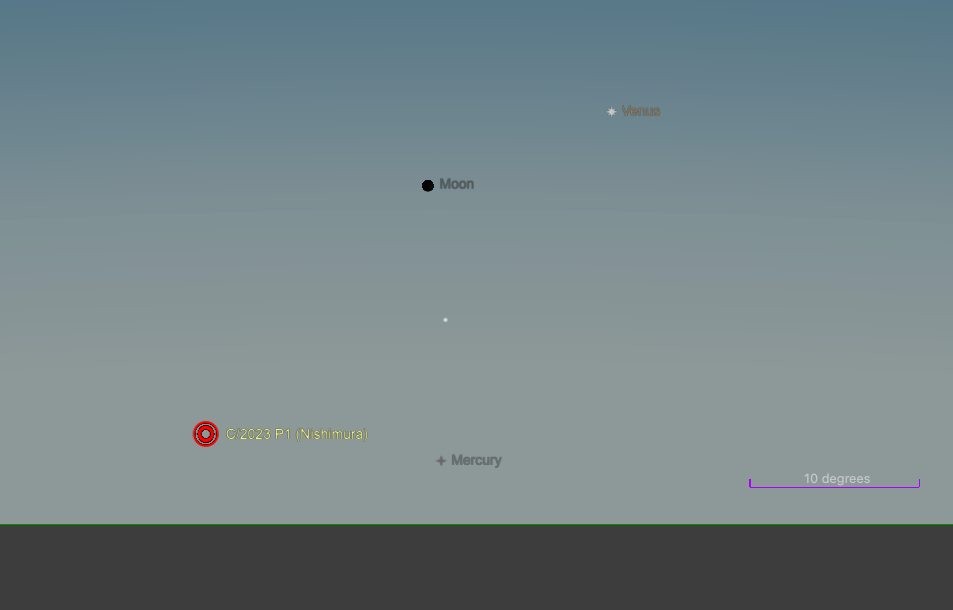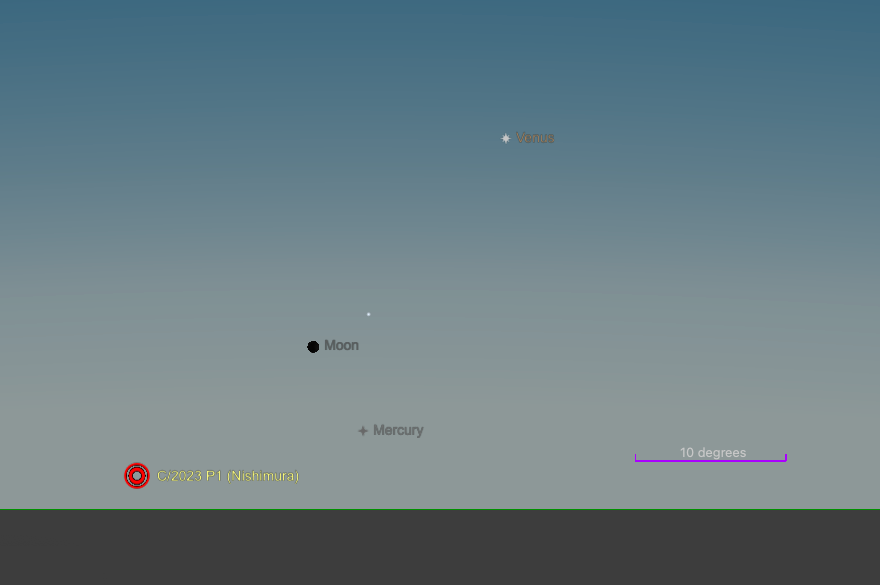
Comet Nishimura has been taking the world by storm. This icy visitor from our outer solar system is speeding through the sky on its way toward the Sun. Now visible less than an hour before dawn, the next few days are your absolute last chance to glimpse this bright comet before it rounds the Sun and flies off out of our solar system, never to be seen again.
Also cataloged as C/2023 P1, Nishimura was only recently discovered in the constellation Gemini. It has been rapidly traveling east, appearing to “fall” toward the Sun day by day as it approaches perihelion on September 17. Along the way, it’s been brightening dramatically and has developed a long, thin tail as ices sublimate away from its surface in the rising temperatures near the Sun.
How to catch the comet
Nishimura is now 4th magnitude, easily captured with optics even in the brightening sky. But because it’s so close to the Sun, it rises only about 40 minutes before dawn tomorrow (September 12). Some 25 minutes before sunrise tomorrow, Nishimura will be just 5° above the eastern horizon in the constellation Leo the Lion. Because most stars will no longer be visible at that time, look instead for the planet Mercury, also close to the eastern horizon, hanging directly below the delicate crescent Moon and shining at magnitude 2.7. From Mercury, look about 15° east-northeast — that’s within about 2.5 binocular fields to the planet’s left and slightly above its location.
Although 4th magnitude objects are visible to the naked eye, between the growing twilight and the comet’s low altitude, you’ll definitely want binoculars or a telescope to find it. Also try to choose an observing site that gets you above your surroundings — a roof or a hill — and pick a place with a clear eastern horizon devoid of tall trees and buildings.

By Wednesday the 13th, Nishimura is just 2° high in the east 25 minutes before sunrise. It will be about the same distance from Mercury (which has faded slightly to magnitude 2.2) but to the lower left, not the upper left. It forms the apex of a downward pointing triangle, with the Moon and Mercury as the base.

Wednesday is likely the last time Northern Hemisphere observers will catch Nishimura. By Thursday, the comet rises only 15 minutes or so before the Sun. On Friday, the comet rises with the Sun, and in subsequent days, it will rise after the Sun.
As always, make sure to put away binoculars or telescopes several minutes before sunrise from your location to prevent serious and potentially permanent damage to your eyes.
Comets like Nishimura offer a wonderful opportunity to see the dynamic nature of our solar system right before your eyes — but only if you move fast!









